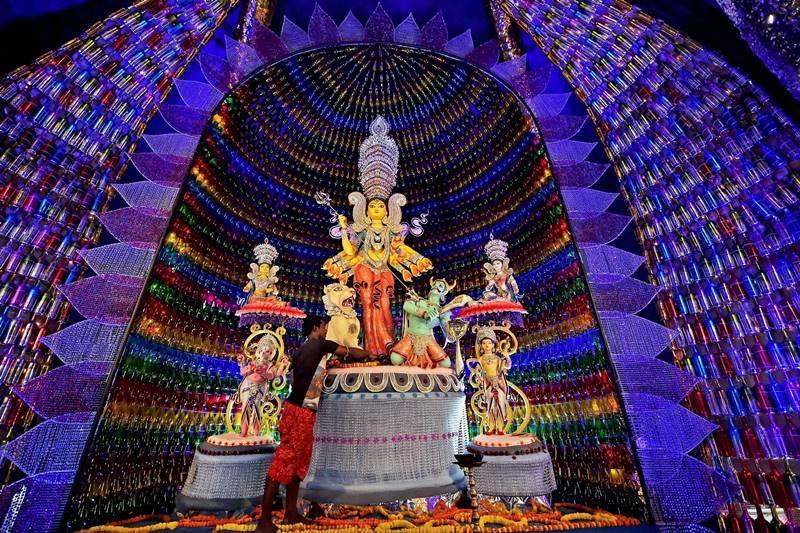Festivals
Durga Puja – In the Indian Culture.

Durga Puja is a famous Hindu festival when Goddess Durga is worshipped. Durga Puja is also known as Durgotsava. Durgotsava refers to all five days festivity and these five days are observed as Shashthi, Maha Saptami, Maha Ashtami, Maha Navami and Vijayadashami. (According to Hindu religious texts Durga Puja, including Chandi Path, should begin from the next day of Mahalaya Amavasya. Mahalaya is the most important day of Pitru Paksha, when Hindus pay homage to their ancestors, is not considered for starting any auspicious work.)
Most states except West Bengal do Ghatasthapana on Pratipada which is the next day of Mahalaya Amavasya. Ghatasthapana is equivalent to Kalparambha during Durga Puja when Goddess Durga is invoked. Kalparambha mostly falls on Shashthi Tithi during Devi Paksha. According to regional customs and beliefs Durga Puja during Shardiya Navratri varies from nine days to one day only which is also mentioned in Dharmasindhu.The Goddess Durga arrives on the Earth on the first day of Devi Paksha which starts on the next day of Mahalaya Amavasya during Pitru Paksha. She departs on Durga Visarjan day. The weekdays when she arrives and departs are significant and considered as omen of coming time.While this is considerably correct, it is perhaps not wholly true, as it is my submission that the Durga puja celebrations are indeed living and pulsating expression of urban folk culture. All the craftsmanship that enriches the pujas, like the designing and execution of the massive theme pandals with their exquisite interior frills and decoration, are new avenues of folk art. The imaginative sculpting of the goddess and her retinue and the special lighting are all products of a refined urban folk culture. Even the songs, that include the traditional pre-puja Aagamoni songs and the prolific literature that are created are also cultural outpourings, though not necessarily of the folk variety. The dhunochi-naach dances that are done before the image, by balancing lighted urns of smoking and burning incense on one’s palms or between the teeth to the furious beat of the drums, are surely a part of folk culture.





























